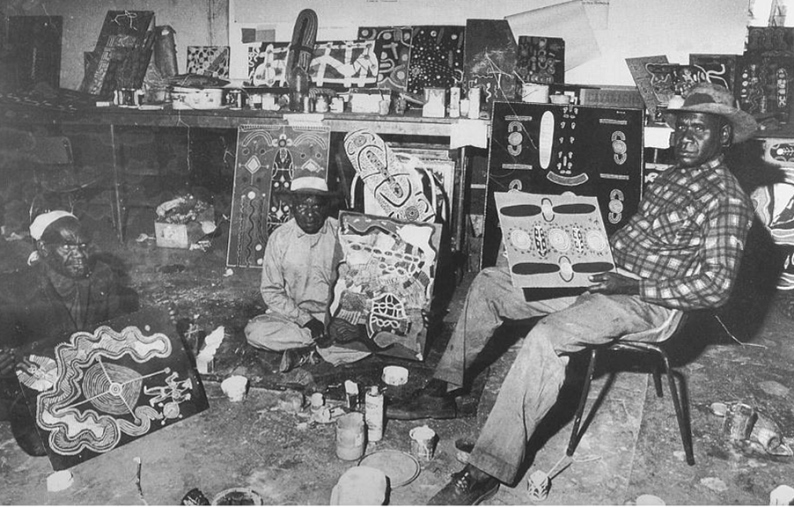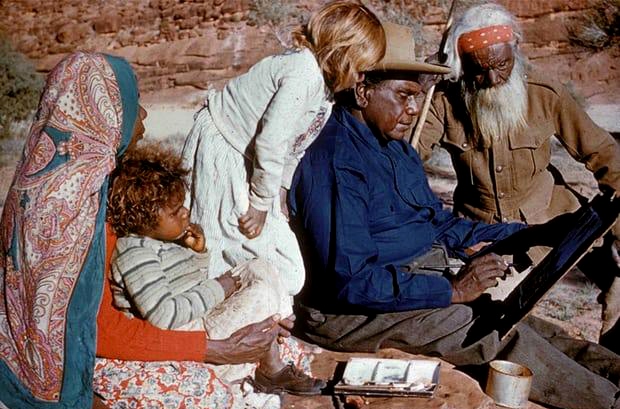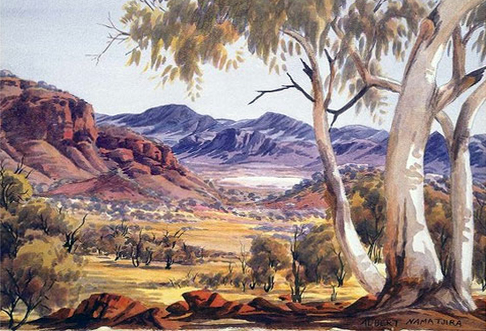Did Contemporary Aboriginal Art Really Start in the 1970s?
We've had some correspondence from an art teacher in the United States. She was wanting to clarify a few points about Aboriginal art and we've decided to share the questions and our answers. Her first question focused on when contemporary art started.
Contemporary Aboriginal painting really established its roots in the 1970s. Like all accounts of art movements, to say it started there is to overlook a number of other factors. The most famous Aboriginal artist before the Western Desert movement was Albert Namatjira, and he was a huge success during his lifetime, starting from his first exhibition in the later 1930s. He was a household name in Australia during the 1960s and is still one of the most successful Aboriginal artists at auction. Outside of Central Desert artists, the most widely collected Aboriginal artworks were bark paintings from northern Australia and Arnhem Land. They had been collected from the 1890s and were seen in most Australian museums and in international collections. These bark paintings were the most recognised style of Aboriginal art during the first half of the twentieth century.
Namatjira was a celebrated watercolour painter working in the landscape style, later called the Hermannsburg school, after the name of his home community. He finally lived in Papunya just before his death, and artists who established the Western Desert movement knew him and could paint in the landscape style made famous by Namatjira.
The importance of this is that although Namatjira was seen by many as an Aboriginal artist painting in the Western style, he was still painting sacred totemic sites. These were mostly rocky outcrops and ranges that had ceremonial significance. Although he painted them as realistic landscapes with rich colours and a distinctive feel, they still had a cultural connection.
The artists who started painting in 1971 were aware of Albert Namatjira. They had watched him paint. Perhaps the main thing they got from Albert's thirty years of success as an artist was the concept that there is a world beyond the Aboriginal world that takes an interest in art. Even if they don't understand Aboriginal culture, they are people who will buy art.
I think this observation allowed for the possibility for desert people of there being an occupation called an artist. They will have seen the advantages of havng an income from painting, and that the artwork still kept its direct connection to the land where the artist was from. In the 1970s the artists started using the symbols that were part of their ceremonial tradition and they found new ways to create paintings that were culturally acceptable to their people. They were able to obscure some of the sacred, spiritual and ceremonial information that could not be shared with outsiders.
The artists of the 1970's created a tradition that is, in many respects, completely different to that of Albert Namatjira. However, there is some degree of continuity. Albert Namatjira died in 1959, and these senior artists started painting 12 years later, but they were familiar with his success.
The process of recognition came slowly for those early artists of Western Desert movement. They expected some financial return from their paintings. However, for the first five or six years, life was difficult and materials were scarce. They received some income but it took ten years before real recognition started to flow. This wave of new art did start in the 1970s. However, it is also true that there were prior conditions that helped, and the critical foundation was the culture deeply connected to ancient rock painting and body painting.




